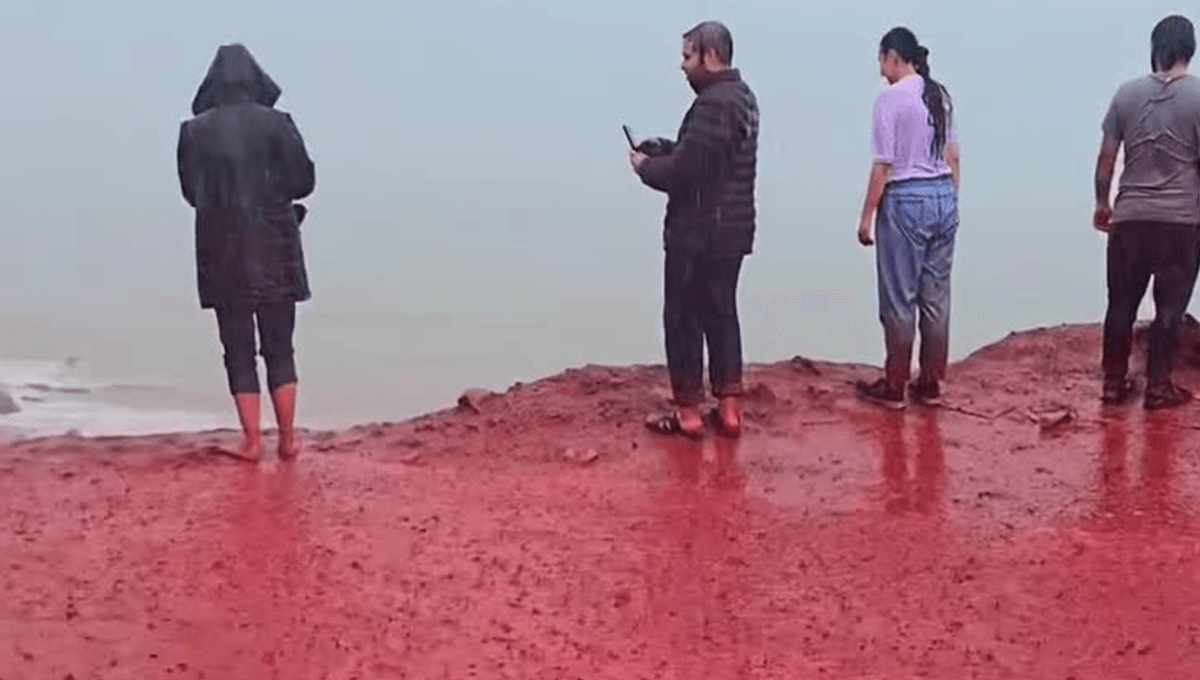
A video taken in a popular tourist hotspot on an Iranian island shows rain flowing down a cliff, turning the beach and sea below blood red.
ADVERTISEMENT
The video, which has amassed over 1 million likes on Instagram, shows a beach on Hormuz Island, Iran, named Red Beach for fairly obvious reasons. The video, posted by a tour guide on the island, shows tourists watching as blood-red water pours down the cliff face.
So, why is the sea turning red? Have we angered the gods? Probably, but that isn’t the cause. While some outlets have suggested that the phenomenon is “blood rain“, that isn’t it either.
Hormuz Island is known as “rainbow island” for its colorful soil and mineral deposits.
“The island is a salt dome—a teardrop-shaped mound of rock salt, gypsum, anhydrite, and other evaporites that has risen upward through overlying layers of rock. Rock salt, or halite, is weak and buoyant, so it loses its brittleness and flows more like a liquid when under high pressure,” NASA’s Earth Observatory explains.
“The rising mass is not purely made of salt. Embedded within it are layers of clay, carbonates, shale, and iron-rich volcanic rocks, some of which have taken on vivid shades of red, yellow, and orange as they moved upward and interacted with water and minerals from other rock layers.”
ADVERTISEMENT
The red color is the result of the red soil interacting with the water.
“Hormuz Island is mostly formed of red soil and salt rock. The red soil originates its color from a mixture of hematite and iron hydroxides but the amount of hematite dominates over iron hydroxides,” a 2023 study into heavy metal content in the soil explains.
This soil is mined, for use in paints, cosmetics, as well as for the facades of buildings. But when it rains, it makes an impressive red color, bringing tourists to the island to witness it.
While you might not look at it and think “yum”, the soil is used in food too, though it’s not recommended due to its heavy metal content.
ADVERTISEMENT
“The red soil has been found in the food of natives of Hormuz Island. The native people of this region of Iran call this soil ‘Gelak’ and use it as a spice. They turn the red soil into a sauce and use it in a variety of foods,” according to the 2023 paper evaluating the risk of consuming the heavy metal-containing soil. “Red soil also has a special place in the preparation of local bread of Hormuz. This bread, which is called ‘tomshi’, is consumed with other foods.”
Source Link: Tourists Watch As The Sea Turns Blood Red On The Iranian Island Of Hormuz